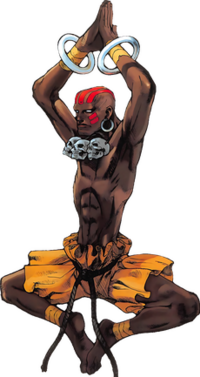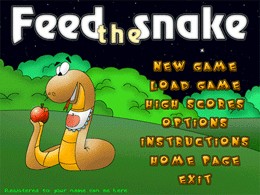1-Screen-Oriented Steering:

(Asteroid Buddies)
Asteroid Buddies is a remake of Asteroids. You control a small space ship and your goal is to destroy the asteroids, which will fall apart in smaller asteroids when you shoot them. The smaller the asteroid, the more points you get for hitting it. Scores can be multiplied (up to 4x) when you score hits without misses inbetween. A special feature in this remake are the asteroid buddies. These blue creatures want to sit on the biggest asteroids, and will be angry when you make that impossible. They cannot hurt you directly, but they might accidentally push you into a rock! Controls: use the 4 arrow keys for steering and thrust, and use the space bar or the right control key for shooting. If you like Asteroid games you should also try Rocks, a great game by ooeyug.
2-Avatar-Oriented Steering:


(Guitar Hero 3 Legend Of Rock)
To start, we'll get the simple stuff out of the way. Menu, camera, and shifting controls are basic digital functions which, for the most part, can be mapped with the "Key = Button" syntax. Keeping in mind that the Wii Remote will be held facing away from the body, we'll configure the d-pad to correspond in an intuitive way.
Key.Up = Wiimote.Left //Up, ForwardKey.Down = Wiimote.Right //Down, BackwardKey.Right = Wiimote.Up //RightKey.Left = Wiimote.Down //LeftKey.Escape = Wiimote.Minus //Menu backKey.Enter = Wiimote.Plus //Menu forward
Key.C = Wiimote.1 //CameraKey.B = Wiimote.2 //Look behindKey.N = Wiimote.A //Nitrous
Key.LeftControl = Classic.Down //DownshiftKey.LeftShift = Classic.Up //UpshiftShift + P + I + E = Wiimote.Home //Stop script running
Key.C = Wiimote.1 //CameraKey.B = Wiimote.2 //Look behindKey.N = Wiimote.A //Nitrous
Key.LeftControl = Classic.Down //DownshiftKey.LeftShift = Classic.Up //UpshiftShift + P + I + E = Wiimote.Home //Stop script running
3-Flying:

B17 Flying Fortees:The Mighty Eight
Navigation is an important factor in the
simulation. The aircraft can fly three le
r
vels of Navigation
Complexity: Historical, Easy or Flawless but for this guide you will
be flying with Flawless navigation.
• Click on the Game Option icon (top left) a red light will switch on when selected and then click on the Continue button (bottom right). You will be taken to the Game Difficulty/Realism menu screen.
• Select the second icon down on the left (marked 1,2,3) and then click on the Continue switch.
• Select the second icon down on the left (marked 1,2,3) and then click on the Continue switch.
Scroll down the list to Navigation Complexity and make sure this is set at ‘Flawless’ and then click on the Continue switch.
• Click on the return to previous screen switch (bottom left) to return to the Main Menu screen.
• Now select to play a New Game (the icon of the B-17 – lower left).
• Click on the icon (a red light will switch on when selected) and then click on the Continue button (bottom right).
• Click on the return to previous screen switch (bottom left) to return to the Main Menu screen.
• Now select to play a New Game (the icon of the B-17 – lower left).
• Click on the icon (a red light will switch on when selected) and then click on the Continue button (bottom right).
4-Point-And Click Navigation:

(War 2 Victory By Wistone)
War 2 Victory puts the player into the role of a general in WWII, where they develop cities, train armies of historically accurate units, carefully manage resources, and battle against fellow players. We’ve focused heavily on getting players into the game, with an intuitive mission system which helps players build up their cities while providing them with additional resources to expand, and enhancing the multiplayer focus of the game, with the Alliance system and the Alliance Campaigns in which different alliances will battle with each other for diamond awards.










